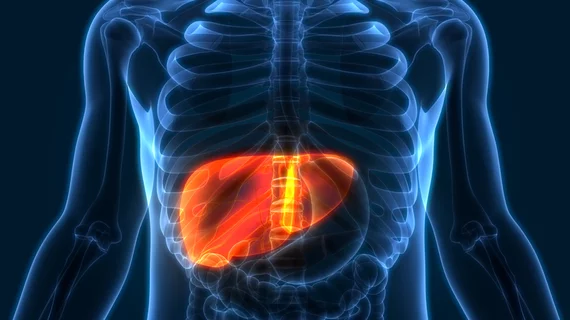Patients prioritize higher imaging sensitivity over lower costs when weighing HCC screening options
Patients prioritize higher imaging sensitivity over lower costs when weighing screening options for the most common type of primary liver cancer, according to new research published in JACR.
Noncontrast, enhanced ultrasound is currently the standard-of-care when testing patients with cirrhosis for such hepatocellular carcinoma. However, it has typically logged a low rate of successfully pinpointing early stages of the disease at about 60% of the time. Abbreviated MRI serves as an alternative, offering an 80% sensitivity rate, but it also comes with a higher price tag and less comfortable testing experience.
Researchers across several institutions recently set out to explore how patients weigh these differing tradeoffs. Among more than 100 individuals with cirrhosis who completed the survey, higher test sensitivity was labeled as the No. 1 priority, followed by lower costs, and a lesser chance of receiving a false positive.
“This study aimed to assess patient preferences for imaging tests for HCC screening, and the results have important implications for understanding patient preferences as potential determinants of adherence,” first author Soudabeh Fazeli, MD, a neuroradiology fellow with the University of California San Diego, and co-authors wrote March 3. “As the cost of care for cirrhosis continues to rise, participants with cirrhosis are increasingly at risk for financial distress,” they added later.
To reach their conclusions, Fazeli et al. conducted a choice-based conjoint analysis—a marketing tool used to identify which attributes of a product or service are most valuable to consumers. They performed their work as an ancillary to two prospective studies occurring at two institutions, aimed at comparing hepatocellular carcinoma detection rates using ultrasound versus MRI.
A total of 135 patients met the study’s eligibility criteria, while 106 completed the web-based survey during their screening visit. Respondents ranked higher testing sensitivity as the biggest attribute driving their preferences, logging an “importance score” of 39.8%, followed by lower cost (22.8%) and false-positivity rate (19.4%). Meanwhile, other attributes around the screening experience, such as test-related anxiety or the need for an IV catheter and contrast, were less crucial in the patient’s eye. When assuming both modalities had the same specificity, participants’ preferences were similar.
“Better understanding and incorporation of patient values and preferences in the decision-making process may improve uptake of and adherence to recommended screening guidelines,” the authors advised. “Future studies may further evaluate an individual patient’s threshold for the cost of a test by using patient-specific cost-share amounts informed by individual insurance benefit design that can aid patient-decision making.”
Read more in the Journal of the American College of Radiology here.

